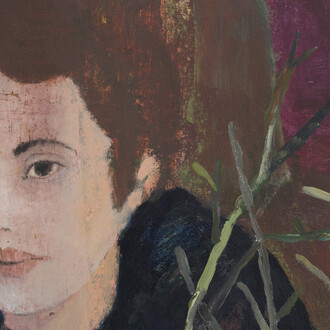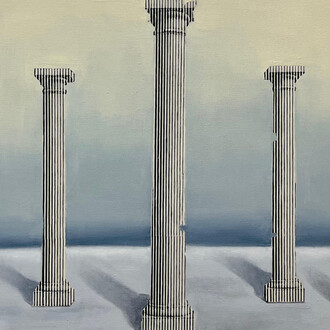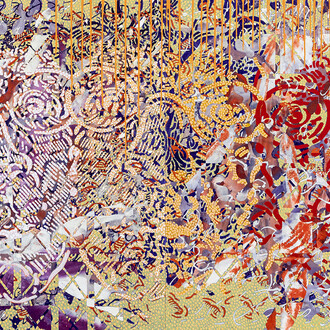The transition of Jean-Baptiste to Joanne Boyer unfolds as an intimate, social, and artistic process. Her testimony shared on Instagram, the exhibition Naufragé de l’âme, and the large canvas Love are all spaces where disclosure and opacity, fragility and creative power intersect.
Boyer's work can never be reduced to mere biographical anecdotes. It is rooted in an intimate experience of years of silence, repression, and secrecy yet it expands into the public sphere of art as an act of resistance. To say “ I exist for who I am ” is not only a personal cry: it is an aesthetic gesture, a way of transforming painting into a language of affirmation and survival.
Through the theoretical lens of Alexandre Baril, one understands that this trajectory is not merely individual. It sheds light on the relations of power that shape gender transitions in our societies, where the demand for confession weighs heavily on trans people. Where one often expects total transparency, Joanne instead asserts a right to opacity: to reveal without telling all, to preserve mystery as a form of freedom. Her figurative art thus becomes the paradoxical space where visibility meets secrecy, confession meets resistance.
Love, a major canvas born from her residency at Fontevraud, embodies this double movement. In the depth of the faces, in the gravity of the bodies, and in the flickering light that traverses them, what emerges is less an achieved identity than an identity in the making. Painting here becomes a space of rebirth: a passage, a threshold, a site where a new way of being in the world is invented.
To situate Joanne Boyer within the field of contemporary art also means placing her within a wider constellation of artists who, each in their own way, explore the passages of identity and the body. With Edi Dubien, she shares a figuration of fragility androgyne figures marked by unease. With Smith, she joins an aesthetic of passage and metamorphosis, but chooses figurative painting as the ground for this transmutation. With Wu Tsang, finally, she converges with the claim to a right to opacity: a creation that does not reveal everything, that protects secrecy as a condition of existence.
Joanne Boyer’s art stands at the crossroads of trans studies and the history of painting: a space where the right to exist is not achieved through explanation, but through the creative act. Naufragé de l’âme bears witness to this power. Far from illustrating a fixed identity, the exhibition opens a passage toward an identity in motion uncertain, yet alive.
Thus, Love and the entire series of canvases appear as a site of rebirth. Here, Joanne Boyer fully asserts herself as both artist and woman, not by yielding to the logic of confession, but by transforming painting into a language of resistance and revelation.
(Text by Henri van Melle)
















